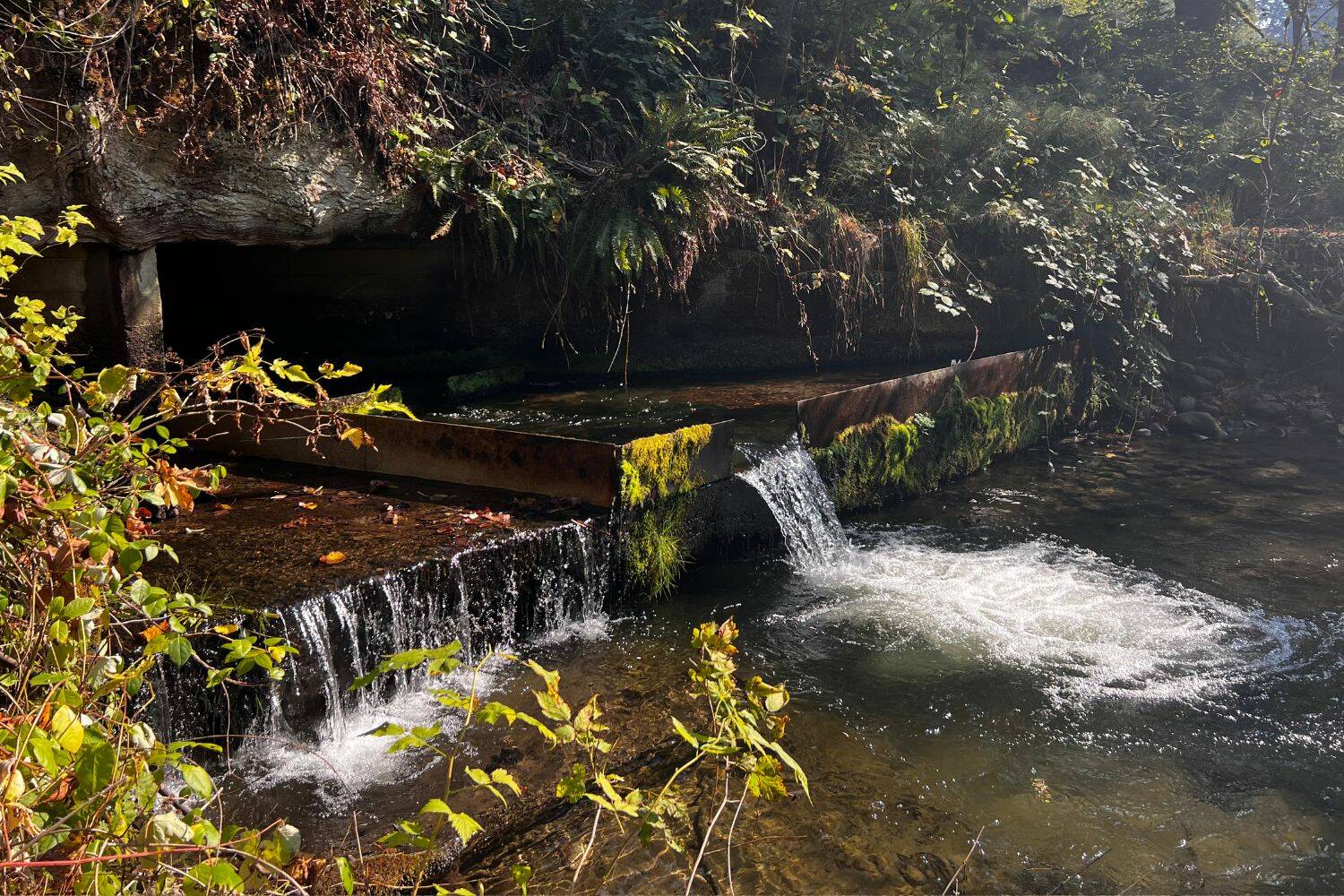According to an audit presented to the King County Council on March 12, a 10-year plan laid out by King County to restore access to fish habitat by removing barriers — primarily road culverts — does not line up with the goal set by the county to open the best habitat for fish as fast as possible.
Fish barriers in King County and across the region can block or limit salmon and steelhead trout trying to return upstream to spawning grounds, contributing to their decline and threatening the treaty rights of tribes in Washington state.
The King County Auditor’s Office reviewed the Fish Passage Restoration Program (FPRP) to look at whether the program had the support to be effective, how the workplan aligned with county and regional goals, and how it supported broader salmon recovery efforts. Its findings were presented to the King County Council’s Government Accountability and Oversight Committee on March 12.
While the report found that the program is making progress, it also found a gap between long-term goals and scheduled projects.
“We are pleased that the Executive concurred with all of our recommendations so the County can amplify the work they are already doing to restore access to salmon habitats and engage thoroughly with local Tribes,” said Kymber Waltmunson, King County Auditor.
King County Executive Dow Constantine created the FPRP in 2018 as part of a broad commitment to salmon protection and honoring tribal treaty rights. The program is tasked with removing county owned fish passage barriers in local streams that block salmon from accessing habitat.
As part of its work, FPRP in 2021 created a model to assign “priority scores” to more than 900 fish passage barriers owned by the county based on habitat impact. The priority scores identify which barriers block access to the most and “best” salmon habitat.
However, the King County Auditor’s Office says that when the FPRP developed its 10-year workplan, it did not sequence barrier removals solely according to priority score. As a result, the program is completing lower impact projects before some higher impact projects.
“This sequencing doesn’t align with the county’s goal of opening the best habitat as fast as possible and puts more impactful projects at risk if there are funding or staffing shortages later,” the King County Auditor’s Office stated regarding the audit.
Other key takeaways from the Auditor’s report include:
– Although the FPRP consulted proactively with local tribes on some program elements, it did not consult with them when developing its 10-year workplan that sequences projects.
“Additionally, the program should ensure early involvement with tribal representatives when planning individual projects,” the auditor stated. “These improvements would further the County’s goals of partnering across governments and ensuring that individuals who are affected by county decisions are involved in the decision-making processes.”
– Additional gaps include the need for the FPRP to consider the impact of non-county-owned barriers when reporting miles of restored habitat, the need for the county to implement a plan for addressing non-county owned barriers that block access to habitat, and the need for a strategic plan that clarifies the program’s goals and objectives, the activities it will complete to reach those goals and objectives, and the measures it will use to track the program’s impact.
The audit makes eight recommendations:
– “The FPRP should ensure public-facing websites and reports accurately reflect the decision-making considerations and tradeoffs involved in its workplan development and the resulting schedule of projects.”
– “The FPRP should review and update its 10-year workplan to ensure it is aligned with county goals as well as with the program’s goals and objectives developed during strategic planning.”
– “The FPRP should develop and document a plan to ensure completion of habitat-focused projects if projects are delayed, cost estimates increase, or funding is otherwise constrained.”
– “The FPRP should develop, document, and communicate the results of performance measures that accurately reflect program outputs and outcomes for restoring fish passage, including the impact of non-county-owned barriers on program outcomes.”
– “The FPRP should develop, document, and begin implementing a strategic plan that clarifies the goals and objectives of the program and should work with Clean Water Health Habitat initiative staff and others to ensure FPRP goals and objectives are consistent with county goals for fish passage and habitat restoration. In developing its strategic plan, the FPRP should ensure the plan aligns with and supports efforts previously described.”
– “The King County Executive should develop, document, and implement a plan that includes the activities necessary to meet the fish habitat goal and progress measures outlined in the King County Clean Water Healthy Habitat Strategic Plan 2020–2025, such as removal of non-county barriers.”
– “The FPRP should develop, document, and implement a plan to ensure ongoing consultation with the local tribes, including consultation on the program’s workplan.”
The FPRP “should ensure” that the defined plan provides for “consultation with local tribes throughout a project’s life cycle.”
Talk to us
Please share your story tips by emailing editor@kentreporter.com.
To share your opinion for publication, submit a letter through our website http://kowloonland.com.hk/?big=submit-letter/. Include your name, address and daytime phone number. (We’ll only publish your name and hometown.) Please keep letters to 300 words or less.

